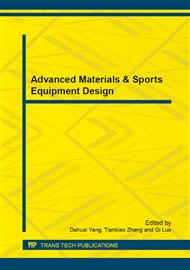p.243
p.248
p.254
p.260
p.266
p.269
p.277
p.283
p.289
The Comparison of the Oil-Water Retained Rate between the Different Style Plates
Abstract:
Purpose: the purpose of this study was to compare the difference of the oil-water retained rate between different style plates. Methods: An ordinary commercial plate and the patented new health plate were used in the same meal program, and the oil-water retention were calculated for each meals. Results: Oil-water retention in patented dish was significantly more than the ordinary plate. Conclusions: Patented new plate has designed an additional V-shaped grooves which can keep more oil and water stay in the plate, and this new plate can fix vegetable, fruit, protein in the proportion to be a balanced and healthy diet. New plate not only can reduce oil-water in the dish and the proportion of food can clearly teach student s to understand and develop good control their diet behavior.
Info:
Periodical:
Pages:
266-268
Citation:
Online since:
October 2013
Authors:
Price:
Сopyright:
© 2014 Trans Tech Publications Ltd. All Rights Reserved
Share:
Citation:


